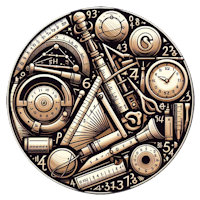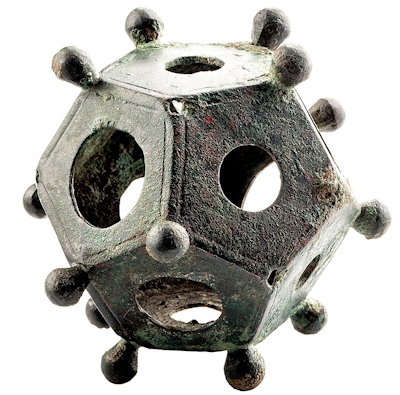
 |
Platonic SolidsIdentify the names, nets and features of the five regular polyhedra. |
This is level 3: count the number of faces on each solid.
Faces are the flat surfaces that make up the sides of a polyhedron. They are sometimes called sides e.g. a dice has six sides.
InstructionsTry your best to answer the questions above. Type your answers into the boxes provided leaving no spaces. As you work through the exercise regularly click the "check" button. If you have any wrong answers, do your best to do corrections but if there is anything you don't understand, please ask your teacher for help. When you have got all of the questions correct you may want to print out this page and paste it into your exercise book. If you keep your work in an ePortfolio you could take a screen shot of your answers and paste that into your Maths file. |
||
|
|
||
|
|

|
More Activities: |
|
Mathematicians are not the people who find Maths easy; they are the people who enjoy how mystifying, puzzling and hard it is. Are you a mathematician? Comment recorded on the 10 April 'Starter of the Day' page by Mike Sendrove, Salt Grammar School, UK.: "A really useful set of resources - thanks. Is the collection available on CD? Are solutions available?" Comment recorded on the 8 May 'Starter of the Day' page by Mr Smith, West Sussex, UK: "I am an NQT and have only just discovered this website. I nearly wet my pants with joy. |
Whose Idea Was This?Did you enjoy doing this 'Platonic Solids' activity? Are you curious about who originally came up with this idea in Maths? Discover more about one of the mathematicians who is associated with this concept. 
|
|
AnswersThere are answers to this exercise but they are available in this space to teachers, tutors and parents who have logged in to their Transum subscription on this computer. A Transum subscription unlocks the answers to the online exercises, quizzes and puzzles. It also provides the teacher with access to quality external links on each of the Transum Topic pages and the facility to add to the collection themselves. Subscribers can manage class lists, lesson plans and assessment data in the Class Admin application and have access to reports of the Transum Trophies earned by class members. If you would like to enjoy ad-free access to the thousands of Transum resources, receive our monthly newsletter, unlock the printable worksheets and see our Maths Lesson Finishers then sign up for a subscription now: Subscribe |
||
Go MathsLearning and understanding Mathematics, at every level, requires learner engagement. Mathematics is not a spectator sport. Sometimes traditional teaching fails to actively involve students. One way to address the problem is through the use of interactive activities and this web site provides many of those. The Go Maths page is an alphabetical list of free activities designed for students in Secondary/High school. Maths MapAre you looking for something specific? An exercise to supplement the topic you are studying at school at the moment perhaps. Navigate using our Maths Map to find exercises, puzzles and Maths lesson starters grouped by topic. | ||
Teachers | ||
|
If you found this activity useful don't forget to record it in your scheme of work or learning management system. The short URL, ready to be copied and pasted, is as follows: |
Alternatively, if you use Google Classroom, all you have to do is click on the green icon below in order to add this activity to one of your classes. |
It may be worth remembering that if Transum.org should go offline for whatever reason, there is a mirror site at Transum.info that contains most of the resources that are available here on Transum.org. When planning to use technology in your lesson always have a plan B! |
|
Do you have any comments? It is always useful to receive feedback and helps make this free resource even more useful for those learning Mathematics anywhere in the world. Click here to enter your comments. |
||
© Transum Mathematics 1997-2026
Scan the QR code below to visit the online version of this activity.
https://www.Transum.org/go/?Num=1099
Close
❎Level 1 - Name the five platonic solids (regular polyhedra)
Level 2 - Match the nets to the shapes
Level 3 - Count the number of faces on each solid
Level 4 - Count the number of vertices on each solid
Level 5 - Count the number of edges on each solid
Level 6 - Discover Euler's Formula
More on this topic including lesson Starters, visual aids, investigations and self-marking exercises.
Answers to this exercise are available lower down this page when you are logged in to your Transum account. If you don’t yet have a Transum subscription one can be very quickly set up if you are a teacher, tutor or parent.
See the National Curriculum page for links to related online activities and resources.
The diagrams of the polyhedra are licensed by Kjell André under the Creative Commons Attribution-Share Alike 3.0 Unported license.
A three-dimensional solid shape with flat polygonal faces, straight edges, and sharp vertices.
A special type of polyhedron where all faces are identical regular polygons, all vertices have the same number of faces meeting, and all edges are the same length. There are five types: Tetrahedron, Cube, Octahedron, Dodecahedron, and Icosahedron.
A two-dimensional layout of the faces of a polyhedron, arranged so that when folded along the edges, it forms the corresponding 3D shape.
The flat surface of a polyhedron, typically a polygon, that forms one of its sides.
The point where two or more edges of a polyhedron meet.
The straight line where two faces of a polyhedron meet, connecting two vertices.
Don't wait until you have finished the exercise before you click on the 'Check' button. Click it often as you work through the questions to see if you are answering them correctly. You can double-click the 'Check' button to make it float at the bottom of your screen.
Answers to this exercise are available lower down this page when you are logged in to your Transum account. If you don’t yet have a Transum subscription one can be very quickly set up if you are a teacher, tutor or parent.
Close
❎
Transum,
Wednesday, June 11, 2025
"From the Roman era (2nd to 4th centuries AD), archaeologists have unearthed over a hundred hollow bronze objects now called Roman dodecahedrons. Each has 12 pentagonal faces pierced by circular holes of varying sizes and small knobs at each vertex. Found across Britain, France, Germany and Hungary, but never in Rome itself, their true function remains a tantalising mystery. Theories range from ritual or magical items and surveying instruments to knitting aids, calendrical devices or measures for pipes and shafts.

Gallo-Roman Museum, CC0, via Wikimedia Commons
What do you think these objects were used for? Nobody knows!"